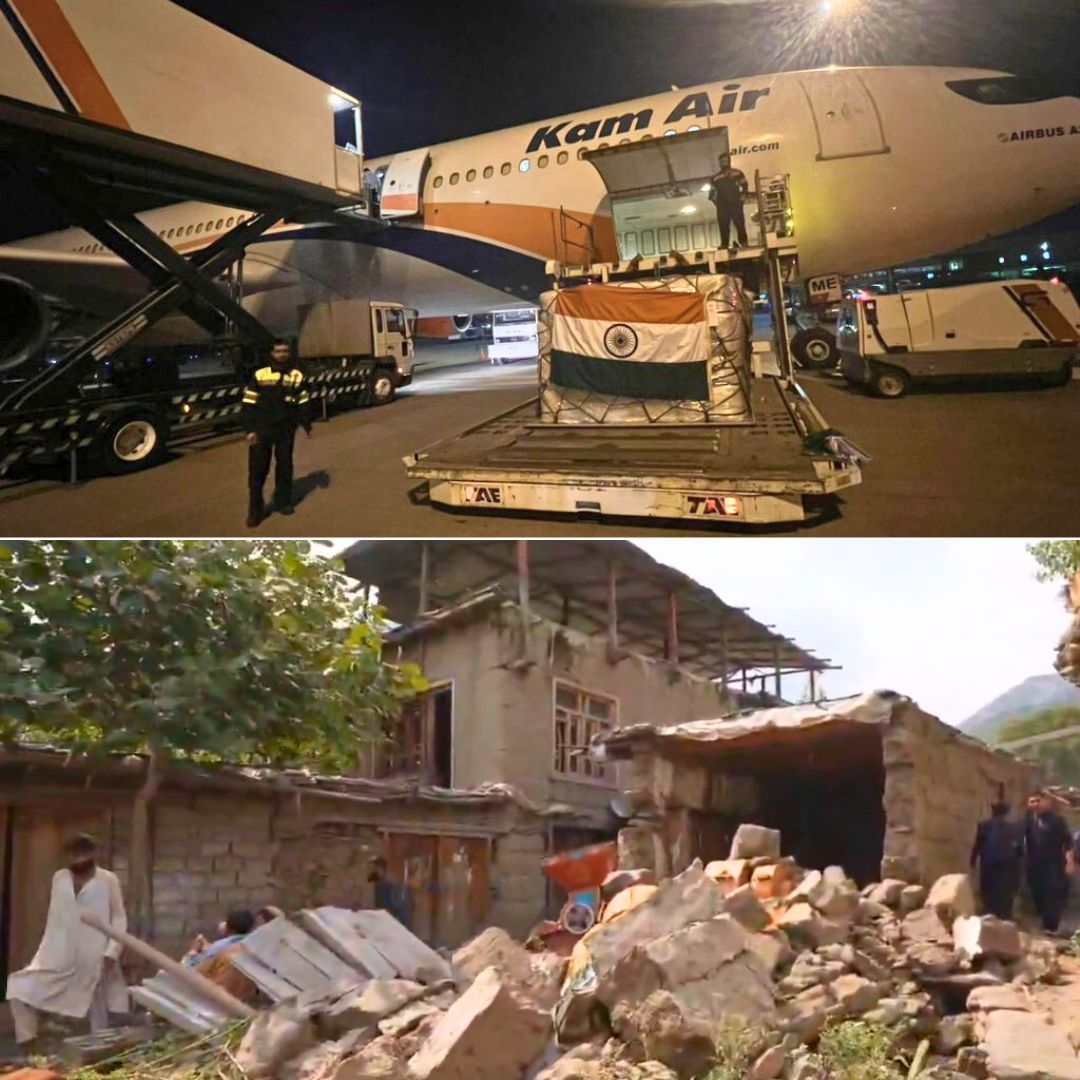A devastating 6.0-magnitude earthquake struck eastern Afghanistan on Sunday night, leaving a trail of destruction across multiple provinces, particularly Kunar and Nangarhar. The disaster has claimed the lives of more than 1,400 people and injured over 3,000, with thousands of homes reduced to rubble and entire villages flattened.
As rescue efforts continue amid challenging terrain and aftershocks, Afghan authorities and international aid agencies warn that this tragedy is deepening an already dire humanitarian crisis in a region beset by conflict, poverty, and fragile infrastructure. India has sent substantial aid to Afghanistan in response to the September 2025 earthquake, delivering 21 tonnes of relief materials including blankets, tents, medicines, hygiene kits, food supplies, and other essentials.
Unprecedented Human Toll and Rescue Challenges
The quake’s epicentre was located near Jalalabad, with tremors felt throughout the Himalayan and Hindu Kush ranges close to the Pakistan border. Striking just before midnight, the shallow depth of the quake, only 8 km below the surface, meant more powerful shaking and less time for residents to respond.
Government spokesperson Zabihullah Mujahid reported that the death toll and injuries stemmed principally from Kunar province, where homes constructed mainly from mud bricks and wood collapsed instantly, trapping residents beneath the debris. Taliban authorities have been forced to airdrop commandos into villages where helicopter landings are impossible, further illustrating the immense logistical obstacles faced by rescue teams.
Indrika Ratwatte, the United Nations Resident and Humanitarian Coordinator for Afghanistan, explained that the timing of the quake, while most residents were asleep, coupled with fragile rural construction, contributed to the high casualty figure.
Afghan Red Crescent Society reports: The 6.1 magnitude earthquake in Kunar has caused 1,124 deaths, 3,251 injuries, & destroyed over 8,000 homes. Many remain trapped under rubble as rescue operations continue. #Kunar #AfghanistanEarthquake pic.twitter.com/YkMc9E7sUU
— Muhammad Jalal (@MJalalAf) September 2, 2025
India Steps Up Humanitarian Assistance
India swiftly responded to Afghanistan’s urgent call for help by airlifting 21 tonnes of relief supplies to quake-hit regions, with the first consignment reaching Kabul on Tuesday. The consignment comprised essential items such as blankets, tents, hygiene kits, water storage tanks, generators, kitchen utensils, portable water purifiers, sleeping bags, medicines, wheelchairs, and water purification tablets. Earlier, India had also sent 1,000 family tents and 15 tonnes of food items including rice to the affected areas, coordinating closely with Afghan authorities and international agencies.
External Affairs Minister S. Jaishankar affirmed India’s commitment to continue monitoring the situation and providing further assistance in the days ahead, stating, “Indian earthquake assistance reaches Kabul by air. India stands ready to provide all possible humanitarian aid to those affected by the quake in Afghanistan”. Prime Minister Narendra Modi also conveyed India’s condolences and support, highlighting solidarity with the Afghan people during their hour of need.
Indian earthquake assistance reaches Kabul by air.
— Dr. S. Jaishankar (@DrSJaishankar) September 2, 2025
21 tonnes of relief materials including blankets, tents, hygiene kits, water storage tanks, generators, kitchen utensils, portable water purifiers, sleeping bags, essential medicines, wheelchairs, hand sanitizers, water… pic.twitter.com/q8TUb1wbSn
Why Afghanistan Remains Vulnerable
Afghanistan’s susceptibility to earthquakes stems from its geological position atop major tectonic plates, where the Eurasian and Indian plates meet and routinely trigger seismic events. The region has a grim history of deadly earthquakes: more than 1,500 people perished in one incident in 2023, and over 1,000 died in a 2022 event.
Unlike cities such as Christchurch, New Zealand, where stricter building codes saved lives despite a similarly sized quake, Afghanistan’s rural communities depend on basic materials and lack engineered designs or professional standards. Many homes employ a “monolithic” style using stone, mud, or wood, materials unable to withstand side-to-side quake movements. This widespread use of vulnerable construction increases the risk for fatalities and makes recovery efforts exceedingly complex.
The Logical Indian’s Perspective
This tragedy starkly underlines the urgent need for compassion, solidarity, and practical action from the global community. Each death and injury is not just a statistic but a personal catastrophe within a population already forced to contend with displacement, poverty, and weakened health infrastructure.
The response must move beyond emergency relief to long-term rebuilding, prioritising safety, dignity, and resilience in disaster-prone communities. Peace, dialogue, and empathy remain the cornerstones for recovery,alongside greater accountability and sustainable development.
Following Sunday's earthquake in eastern #Afghanistan, UNICEF teams are on the ground supporting affected communities.
— UNICEF Afghanistan (@UNICEFAfg) September 2, 2025
We are deploying emergency supplies, including 2,000 kits with hygiene items, warm clothing, blankets and kitchen equipment for families who lost their homes. pic.twitter.com/BNxgCTxN5m











